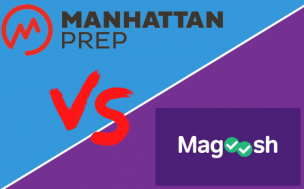But, at least the figure is out there. Having a figure gives students a nudge in the right direction, packaging into three numbers an idea of the amount of preparation applicants need to do.
See the latest average GMAT scores for the world's top MBA programs
Those figures are rising. When BusinessBecause covered the average GMAT scores for the world’s top 20 MBA programs last year, we found that elite programs in the US recorded year-on-year increases in GMAT averages. The same can be said of this year’s scores.
Chicago Booth’s average GMAT score hit a whopping 738 this year, up from 726 last year, meaning that Stanford—whose score remained the same at 737—was ousted as the school among the world’s top 20 with the...
Kellogg saw an increase from 717 in 2014, to 728 last year. This year, the school’s average GMAT score has risen again, to 732. Harvard, sitting on 725 in 2015, noted a score of 729 last year. This year, the school’s average GMAT score is 730.
Columbia Business School’s score has risen from 717 last year, to 724 this year, and the same can be said for Yale (up from 725 last year to 727), and Tuck (up from 717 last year to 722). Haas, who noted an average GMAT score of 717 last year, has also seen a rise. This year the school’s average score is 725.
To be sure of a place at a top 20 school applicants should be looking to notch up a 660 or more on their GMAT. This is the average score at ESADE Business School, in Spain, the lowest average among the top 20.
Other schools in the sub-700 category are newcomer the National University of Singapore, whose average is 662, the Hong Kong University of Science and Technology (HKUST), which record an average of 670, and IESE, also in Spain, with an average of 680, down from 690 last year.* The China Europe International Business School (CEIBS) is the other Asian representative, noting an average GMAT of 682.
“GMAT scores remain an important indicator in the admissions process,” says Steven Ji, assistant director of MBA admissions at CEIBS, “however it does only tell part of the story about an applicant.
“Applicants should bear in mind that although we take a comprehensive approach to assessing your background and suitability, it only takes a split second to see a GMAT score, form an initial impression, and mentally compare it to that of the next applicant.”
Steven admits that CEIBS understands the time and dedication that goes into an MBA application, but applicants should note that a lower GMAT score gives you “a mountain to climb for the rest of the admissions process.”
Over the past five years, he concludes, CEIBS has seen an increase in the number of countries represented by applicants. This, he supposes, is down to China growing in prominence on the world stage, and the development of initiatives like Belt-and-Road.
But, as he argues, a GMAT score is only part of the full picture of an applicant. The admissions process is long and arduous, and three numbers are only a fraction of a candidate's suitability to a program.
“We spend a lot of time interviewing candidates, and getting to know them,” says Elena Santodomingo Berry, associate director for the Global Executive MBA program at IESE, “so it’s not only the GMAT through which we make a decision.
“It’s also important to see a person as a professional and look at what their experience has been over the years, and what they would bring to the class that is different.”
IESE purposefully designs a cohort built with diversity. “It’s about creating platforms where you nurture growth,” Elena continues.
They factor in passion and motivation as well as past industry experience. Of course, the GMAT measures analytical skills and acts almost as a stress test for a candidate’s ability to deal with the pressures and workload of an MBA. But it’s not a measure of humility, or an indicator of someone’s ability to lead people. “You need to be able to make an impact in your work with others, understand different cultures, be able to listen, and change your mind,” says Elena. “So, we look for this balance.”
Pascal Michels, Elena’s colleague and MBA admissions director as IESE, agrees. “We use the case discussion teaching method, so leveraging the accumulated experience in our extremely diverse classroom is at the heart of our core value proposition,” he explains.
“In that sense, it seems obvious that no GMAT score in the world could ever make up for a lack of relevant work experience. Summing it up, I would say that a high GMAT will not make up for lack of experience, but stellar work experience can compensate for a lower GMAT.”
The data in this article was sourced both directly from business schools and from Poets&Quants' Average GMAT Scores At The Top 50 Business Schools
*The average GMAT score attributed to IESE Business School has not been confirmed by the school. IESE is yet to officially communicate the average GMAT for its class of 2020.
Register for free to continue reading
RECAPTHA :
5c
42
dc
95











The best of our Premium Articles